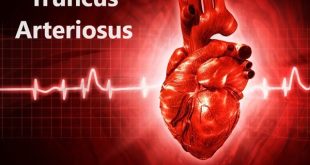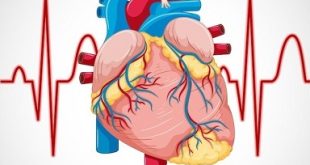Definition
Carotid Artery Disease or Carotid artery stenosis is a condition that happens when your carotid artery, the large artery on either side of your neck, becomes blocked. The blockage is made up of a substance called plaque (fatty cholesterol deposits). When plaque blocks the normal flow of blood through your carotid artery, you’re at a higher risk of stroke. Plaque build-up is called atherosclerosis.
You have two carotid arteries one on each side of your neck. These are large arteries that bring blood to your brain, face and head. When they’re healthy, these arteries are smooth and open, like a clean pipe that allows the free flow of fluid without anything in the way. Your body’s circulatory system is a network of tubes that carry blood (containing nutrients and oxygen) to all the parts of your body.
You can develop carotid artery stenosis in either of the two arteries in your neck or in both. This condition can worsen over time without medical care, leading to stroke with severe complications that can include death.
Types of Carotid Artery Disease
Carotid artery disease, also known as carotid artery stenosis, refers to the narrowing or blockage of the carotid arteries, which are the major blood vessels that supply oxygen-rich blood to the brain. This condition is usually caused by the buildup of plaque, a combination of cholesterol, fat, calcium, and other substances, on the inner walls of the arteries. There are two main types of carotid artery disease:
Carotid Artery Stenosis: This type occurs when the carotid arteries become narrowed due to the buildup of plaque on their walls. The narrowing reduces blood flow to the brain, increasing the risk of stroke. Stenosis is often classified based on the degree of narrowing:
- Mild Stenosis: Less than 50% narrowing of the artery’s diameter.
- Moderate Stenosis: 50% to 69% narrowing.
- Severe Stenosis: 70% or more narrowing.
Carotid Artery Occlusion: In this type, the carotid artery becomes completely blocked, usually by a blood clot or a piece of plaque that breaks off from the artery wall and lodges farther downstream, blocking blood flow to a portion of the brain. This can lead to a stroke or transient ischemic attack (TIA), also known as a mini-stroke.
Additionally, carotid artery disease can be categorized based on its clinical presentation:
- Symptomatic Carotid Artery Disease: This refers to cases where the narrowing or blockage of the carotid artery leads to symptoms such as transient ischemic attacks (TIAs) or strokes. Symptoms might include sudden weakness or numbness on one side of the body, difficulty speaking, loss of vision in one eye, and more.
- Asymptomatic Carotid Artery Disease: In these cases, there might be a significant degree of stenosis or plaque buildup in the carotid arteries, but the patient does not experience any noticeable symptoms. This type is often discovered incidentally during routine medical checkups or diagnostic imaging for other issues.
Both symptomatic and asymptomatic carotid artery disease can be diagnosed through imaging tests like carotid ultrasound, Doppler ultrasound, magnetic resonance angiography (MRA), and computed tomography angiography (CTA). Treatment options vary depending on the severity of the disease and the patient’s overall health. Common treatments include lifestyle changes (diet, exercise, smoking cessation), medications to manage risk factors (cholesterol-lowering drugs, antiplatelet medications), and, in severe cases, surgical procedures such as carotid endarterectomy or carotid artery stenting to remove or bypass the blockage.
Epidemiology
Carotid Artery Disease (CAD), characterized by the narrowing or blockage of the carotid arteries supplying blood to the brain, is a prevalent condition primarily affecting older adults, with prevalence rising notably beyond the age of 65. More commonly observed in men and often linked to risk factors such as hypertension, high cholesterol, smoking, diabetes, and obesity, CAD’s prevalence varies geographically due to regional differences in risk factor prevalence. African Americans, Hispanics, and Native Americans might face a higher risk, and CAD frequently coexists with other cardiovascular diseases. Early detection and prevention through lifestyle modifications are vital in mitigating the disease’s impact, particularly its association with strokes and transient ischemic attacks.
Pathophysiology
Total internal carotid artery occlusion results from thrombosis in the setting of chronic stenosis. Cardiogenic embolization to a normal carotid bifurcation or carotid dissection may also cause total occlusion of the internal carotid artery occlusion. Acute occlusion may result in a carotid territory stroke. A previously asymptomatic chronic internal carotid artery occlusion may become symptomatic if related to embolic or hemodynamic issues. Embolism may occur from the ipsilateral external carotid artery via collaterals to the cerebral circulation. It may also happen when there is occult patency of the occluded internal carotid artery occlusion, which then serves as the source of embolic material. Hemodynamic insufficiency may occur when any condition that interferes with cerebral perfusions such as orthostasis, hypotension, volume depletion, or cardiac failure is superimposed on the carotid occlusion, especially when the contralateral carotid disease is significant.
Causes of Carotid Artery Disease
Carotid artery disease, or carotid artery stenosis, is primarily caused by atherosclerosis, the buildup of plaque on the inner artery walls. Key factors include:
- Atherosclerosis: Deposits of fat, cholesterol, and other substances narrow the carotid arteries, reducing blood flow to the brain.
- High Blood Pressure: Hypertension stresses artery walls, increasing the risk of damage and plaque formation.
- High Cholesterol: Elevated LDL (“bad”) cholesterol contributes to plaque development.
- Smoking: Damages blood vessels, making them prone to plaque buildup.
- Diabetes: Alters metabolism and promotes atherosclerosis.
- Obesity: Excess weight increases cardiovascular risk.
- Family History: Genetics can influence susceptibility.
- Age: Risk rises with age due to arterial changes.
- Inactivity: Lack of exercise raises cardiovascular risk.
- Unhealthy Diet: Diets high in fats and cholesterol foster plaque formation.
- Excessive Alcohol: Heavy drinking can elevate blood pressure.
- Chronic Kidney Disease: Impaired kidney function relates to higher risk.
Symptoms may not appear until advanced stages. They can include temporary neurological symptoms (TIAs) or full strokes, causing permanent brain damage. Lifestyle changes, medications, and surgery can manage risk factors and prevent complications. Consult a healthcare professional if you’re concerned about carotid artery disease.
Symptoms
The disease may have no symptoms. In some cases, the first sign of the disease is a transient ischemic attack (TIA) or stroke.
A TIA is a sudden, short-term loss of blood flow to a part of the brain. It usually lasts a few minutes to an hour. Symptoms go away fully within 24 hours. There are no lasting effects. When symptoms continue, it is a stroke. Symptoms of a TIA or stroke may include:
- Sudden weakness or clumsiness of an arm or leg on 1 side of the body
- Sudden paralysis of an arm or leg on 1 side of the body
- Loss of coordination or movement
- Confusion, loss of ability to concentrate
- Dizziness, fainting, or headache
- Numbness or loss of feeling in the face or in an arm or leg
- Temporary loss of vision or blurred vision
- Inability to speak clearly or slurred speech
If you or a loved one has any of these symptoms, call for medical help right away. A TIA may be a warning sign that a stroke is about to occur. But TIAs don’t precede all strokes.
The symptoms of a TIA and stroke are the same. A stroke is loss of blood flow (ischemia) to the brain that lasts long enough to cause brain damage. Brain cells start to die after just a few minutes without oxygen.
The effects after a stroke depends on the size and place in the brain that had loss of blood flow. This may include problems with:
- Moving
- Speaking
- Thinking
- Remembering
- Bowel and bladder function
- Eating
- Emotional control
- Other vital body functions
Recovery also depends on the size and place of the stroke. A stroke may result in long-term problems, such as weakness in an arm or leg. It may cause paralysis, loss of speech, or even death.
The symptoms of carotid artery disease may look like other health problems. See your healthcare provider for a diagnosis.
What are the risk factors of Carotid Artery Disease?
The risk factors for carotid artery disease are similar to those for other types of heart disease. They include:
- Age
- Smoking
- Hypertension (high blood pressure the most important treatable risk factor for stroke
- Abnormal lipids or high cholesterol
- Insulin resistance
- Diabetes
- Obesity
- Sedentary lifestyle
- Family history of atherosclerosis, either coronary artery disease or carotid artery disease
Men younger than age 75 have a greater risk than women in the same age group. Women have a greater risk than men older than age 75. People who have coronary artery disease have an increased risk of developing carotid artery disease. Typically, the carotid arteries become diseased a few years later than the coronary arteries.
Complications
Carotid artery disease can lead to several serious complications due to reduced blood flow to the brain and the potential for blood clots to form in the narrowed arteries. Some of the complications include:
- Transient Ischemic Attacks (TIAs): Also known as “mini-strokes,” TIAs are temporary disruptions of blood flow to the brain. They can cause symptoms similar to a stroke, such as weakness, numbness, confusion, and difficulty speaking. TIAs are warning signs that a full stroke may be imminent.
- Ischemic Stroke: A more severe complication, an ischemic stroke occurs when a blood clot completely blocks a carotid artery or one of its branches. This can lead to the death of brain cells due to lack of oxygen and nutrients, causing lasting neurological damage.
- Cerebral Infarction: If a clot or plaque debris breaks off from a carotid artery and travels to smaller brain arteries, it can cause a cerebral infarction, which is a localized area of brain cell death.
- Hemorrhagic Stroke: While less common, carotid artery disease can weaken artery walls and contribute to the formation of an aneurysm (bulging of the artery wall). If an aneurysm ruptures, it can lead to bleeding in the brain, known as a hemorrhagic stroke.
- Cognitive Impairment: Reduced blood flow to the brain can result in cognitive deficits, including memory problems, difficulty concentrating, and overall cognitive decline.
- Vision Problems: In severe cases, carotid artery disease can affect the blood supply to the eyes, leading to vision problems and potential blindness.
- Difficulty with Speech and Language: A stroke caused by carotid artery disease can impact areas of the brain responsible for language and speech, leading to communication difficulties.
- Paralysis or Weakness: Depending on the location and extent of the stroke, paralysis or weakness in one side of the body may occur.
- Death: If carotid artery disease leads to a severe stroke or multiple strokes, it can ultimately result in death.
It’s important to recognize the signs of a stroke and seek immediate medical attention if you or someone you know experiences symptoms such as sudden weakness, numbness, confusion, trouble speaking, severe headache, dizziness, or loss of balance. Early intervention can significantly improve the chances of a better outcome and reduce the extent of potential complications.
How to diagnosis carotid artery disease?
Along with a complete medical history and physical exam, tests for carotid artery stenosis may include:
- Listening to the carotid arteries. For this test, your doctor places a stethoscope over the carotid artery to listen for a sound called a bruit (pronounced brew-ee). This sound is made when blood passes through a narrowed artery. A bruit can be a sign of atherosclerosis. But, an artery may be diseased without producing this sound.
- Carotid artery duplex scan. This test is done to assess the blood flow of the carotid arteries. A probe called a transducer sends out ultrasonic sound waves. When the transducer (like a microphone) is placed on the carotid arteries at certain locations and angles, the ultrasonic sound waves move through the skin and other body tissues to the blood vessels, where the waves echo off of the blood cells. The transducer sends the waves to an amplifier, so the doctor can hear the sound waves. Absence of or faintness of these sounds may mean blood flow is blocked.
- MRI scan. This procedure uses a combination of large magnets, radiofrequency energy, and a computer to make detailed images of organs and structures in the body. For this test, you lie inside a big tube while magnets pass around your body. It’s very loud.
- Magnetic resonance angiography (MRA). This procedure uses magnetic resonance technology (MRI) and intravenous (IV) contrast dye to make the blood vessels visible. Contrast dye causes blood vessels to appear solid on the MRI image so the doctor can see them.
- Computed tomography angiography (CTA). This test uses X-rays and computer technology along with contrast dye to make horizontal, or axial, images (often called slices) of the body. A CTA shows pictures of blood vessels and tissues and is helpful in identifying narrowed blood vessels.
- Angiography. This test is used to assess the how blocked the carotid arteries are by taking X-ray images while a contrast dye is injected. The contrast dye helps the doctor see the shape and flow of blood through the arteries as X-ray images are made.
Treatment for Carotid Artery Disease
The process of treatment focuses on removing obstructions in the carotid artery to lower the risk of blood clots that can lead to strokes. Approaches for managing carotid artery disease encompass:
- Blood-thinning medications: Medicines including aspirin, clopidogrel (Plavix), dabigatran (Pradaxa) or warfarin (Coumadin) help your blood flow more easily and reduce the risk of clots.
- Carotid endarterectomy: The traditional treatment for carotid artery disease, endarterectomy remains the gold standard for clearing the carotid artery.
- Carotid angioplasty and stenting: With either type of procedure to clear the carotid artery, we offer expertise in stenting the artery. A carotid artery stent is a small mesh tube. The stent remains in the artery to hold it open, permitting healthy blood flow.
- Transcarotid artery revascularization (TCAR): TCAR is a minimally invasive procedure to restore blood flow through your carotid artery with no incision and less downtime. This advanced option is available to people who don’t qualify for open surgery due to their risk criteria.
Medications
People who have no symptoms or who have low-grade carotid stenosis of less than 50% are usually treated with medications. People who have a medical condition that would increase the risk of surgery also are likely to be treated with medication. Medications include:
- Antiplatelet medications (aspirin, ticlopidine, clopidogrel) thin the blood and prevent clotting in the narrowed arteries, which allows blood to pass through more easily.
- Cholesterol-lowering statins help reduce plaque formation in atherosclerosis. Statins can reduce LDL “bad” cholesterol by an average of 25-30% when combined with a low-fat, low-cholesterol diet.
- Antihypertensive medications (diuretics, ACE inhibitors, angiotensin blockers, beta blockers, calcium channel blockers, etc.) help control and regulate blood pressure. Because high blood pressure is a major risk of stroke, regular blood pressure screenings are recommended.
Surgery
Prevention
These steps can help prevent carotid artery disease or keep it from getting worse:
- Don’t smoke. Within a few years of quitting, a former smoker’s risk of stroke is like a nonsmoker’s.
- Maintain a healthy weight. Being overweight increases other risk factors, such as high blood pressure, cardiovascular disease, diabetes and sleep apnea.
- Eat a healthy diet. Focus on fruits and vegetables, whole grains and fish, nuts and legumes. Limit cholesterol and fat, especially saturated and trans fats.
- Limit salt. Too much salt can increase blood pressure in some people. Experts recommend that healthy adults eat less than 1,500 milligrams of salt a day.
- Exercise regularly. Exercise can lower blood pressure, increase high-density lipoprotein (HDL) cholesterol, the “good” cholesterol and improve the overall health of your blood vessels and heart. It also helps you lose weight, control diabetes and reduce stress.
- Limit or avoid alcohol. If you choose to drink alcohol, do so in moderation. For healthy adults, that means up to one drink a day for women and up to two drinks a day for men.
- Control illnesses. Managing conditions such as diabetes and high blood pressure helps protect arteries.
 Diseases Treatments Dictionary This is complete solution to read all diseases treatments Which covers Prevention, Causes, Symptoms, Medical Terms, Drugs, Prescription, Natural Remedies with cures and Treatments. Most of the common diseases were listed in names, split with categories.
Diseases Treatments Dictionary This is complete solution to read all diseases treatments Which covers Prevention, Causes, Symptoms, Medical Terms, Drugs, Prescription, Natural Remedies with cures and Treatments. Most of the common diseases were listed in names, split with categories.








thank you 💕💕💕💕